Лотус за Австрия
Ромен Грожан:
What’s your outlook heading to Austria?
I am positive. Even though the end result in Canada might not show it, we’ve actually made good progress with the car and it’s starting to feel like a real racer in how it handles and how all the systems feel. This is very important to me as it helps you get the most out of the car through every corner to make the most of every lap. Certainly at the start of the season this new generation of car was not the easiest or the most pleasurable thing to drive, but I’m being won round! The feel of the car is an important aspect of the improvements being made so it’s another piece in the jigsaw.
Have you driven the Spielberg circuit before?
Competing in the Grand Prix will be my first experience there, which is a pretty cool way to get to know a track! It looks like quite a fun lap with some high speed sections and not too much low speed stuff – which hasn’t suited our car so far this year. The track has a bit of undulation too, which is always fun as a driver. A downhill approach to a corner means you have to drive it quite a bit differently than if it’s an uphill approach and Spielberg has both of those. It should be fun.
How do you prepare going to a track that’s new for you?
There’s a lot you can do with simulators, watching on board laps from other people and going through data and predictions with your engineers as well as driving the track on the Xbox! That said, nothing beats getting in the car and actually driving it for real. I’ll be pretty excited at the start of FP1 as that’s when I’ll really know what sort of track it is.
How do you work on set-up at the same time as learning a new track?
You very quickly know what you want from the car and how to put together all the corners which make a circuit that’s new to you. The objective for learning a track and setting up the car is to go as fast as possible so for both it’s all the same goal.
How frustrating was it to retire from the Canadian Grand Prix?
You never want to stop racing so it wasn’t the best. That said, it was a pretty exciting end to the race so it was good to watch it as it happened! Our target is to be part of the battle of fighting for points positions so we need to ensure we don’t have any more problems with the car. We’re making definite progress with pace, how the car feels and generally with reliability too, so it was frustrating that there was an issue with the rear wing. It’s another lesson learnt and we will come back stronger for Austria and beyond.
How competitive do you think you can be in Austria?
We won’t know for sure until we’ve been out on track, but I don’t think the circuit should be as much of a challenge to us as Monaco or Montreal. Certainly there are fewer low speed corners which seem to have been more difficult for us this season and the downforce level could suit us better too.
How has it been working with a new team-mate now you have a good number of races together?
Pastor’s a great guy and easy to work with. We’re both positive and proactive and know what we want from the car and the team. He’s fast too so it keeps me on my toes to beat him!
What are your thoughts on revising the weekend format for Grands Prix?
As long as there’s a Grand Prix and qualifying session, that’s the main thing! Whatever happens, it will be the same for everyone. I quite like the idea of a practice session late on Friday as it means I won’t have to get up so early! Let’s see what happens.
Пастор Малдонадо: What are your thoughts ahead of Austria?
I know the track, but it was maybe ten years ago when I last raced there and it will be new for me in an F1 car. I think it should be quite good for the E22. It looks like the circuit doesn’t have too many low speed corners and the downforce and set-up is similar to Barcelona, which should help us. We will work hard to solve the problems we had in Canada so that we can reach our targets in Austria. I’m certainly optimistic Austria will suit us better than the last two rounds.
What were the positives and negatives from Canada?
The main positive was that we were fighting for points, easily. The strategy was quite good: Starting on prime tyres and planning only one stop. It was difficult in terms of grip at the beginning and we lost some places, which we expected because the other guys were on super soft tyres. But the pace came and I was competitive. We started 17th and were up to eighth place. Then we had a power unit problem and had to retire. I know we’ve had retirements before, but this was particularly difficult as we have really made progress and we could have finished well despite starting the race from so far back.
How is your morale after two tough races?
I am very motivated. I think we have some good weekends ahead of us and there are still so many races to go. The European part of the season is very important for us, so let’s push hard, do our best and for sure we will be in the points soon.
Do you like racing in Europe?
I like to be racing anywhere! I have raced for many years in Europe and so many of the junior categories are there. Of course, I would love to race at home too, but racing anywhere is what you want to do as a race driver. I would race on the moon if there was a race track there!
What do you remember about your last race in Austria?
It was in Formula Renault and I finished on the podium. Actually I think I won, but I don’t remember to be honest! It’s a high downforce track. Most of the corners are very quick, especially in the second sector. It’s a lot of fun to race there and I’m happy to be going back.
How is the relationship with the team?
We all know what we have to do and we are all pushing hard. Yes, we can all get frustrated, but ultimately we all want to achieve success so we remain positive. We can see how much improvement there has been with pace from the car and once we have all the reliability issues sorted we’ll be regularly fighting for points. Once we’re there, the next target is to fight for more points and then podiums. We’ve seen that the Mercedes are not perfect and can be beaten. Even they had reliability issues in Canada.
Given the start to your season, does your outlook change?
No, I still keep pushing and it’s still possible to achieve good things this year. We have had a third of the season which has been a challenge – a big challenge – but we still have two thirds of the year to go with many circuits which should suit our car. You arrive at every track with the target of having the best weekend possible and finding as much performance from the car and yourself. This does not change if you’ve had a difficult last weekend in the car.
I can’t wait to get out in FP1 in Austria.
Ник Честър: How would you categorise the Spielberg circuit?
The layout requires a medium downforce package for the car. In terms of demands it’s similar to Bahrain with some decent straights and then an infield section with medium speed corners. So it’s lower downforce than some tracks on the calendar. Pirelli’s track surface analysis points to a relatively non-abrasive, smooth asphalt which is why we will see the soft and super soft allocation once more.
How much of a challenge is it to understand a new circuit?
It can be quite challenging, although in the case of Austria we have been before. We raced there from 1997 to 2003, so there’s a certain knowledge bank we can dip into. In particular we have information about driving lines which improves the accuracy of our simulations. In contrast, with a brand new circuit it’s more complicated because we have to generate a driving line to be able to run a simulation and without a real driving line the simulated corner speeds will not necessarily be 100%. We’ve already got real data for Austria, so we can do a basic simulation quite easily.
Neither driver has driven the track before as F1 drivers, how does that change our approach?
It biases you towards doing longer runs and much of the first session will be about letting Pastor and Romain learn the circuit. As we haven’t been there for over a decade, things like track surface evolution could be a challenge as we learn how much the track cleans up as the weekend progresses and this has an impact on set-up.
The post Canada debrief can’t have been pleasant?
It’s fair to say we were not happy with our performance in Canada. We had a number of issues with Pastor’s car over the weekend, emanating both from ourselves and from Renault Sport F1 whilst Romain struggled with race pace and experienced an issue with his rear wing. To say we are investigating these issues thoroughly is an understatement. Pastor’s issue in the race was related to a power unit sensor problem. It’s only a small component on the car but the issue had big repercussions. Pastor was on course to finish strongly in the points. With Romain’s car we’ve identified the issue with the wing and taken preventative measures to ensure it won’t happen again. Every time we experience a retirement it hurts every single person at Enstone and all of our partners. We will keep pushing until we return to the exemplary level of reliability we enjoyed over recent seasons.
What are the latest developments for the car for Austria?
We have a number of aero updates and we have some more work to do on braking. There is a good chunk of time still to be found in the braking zone and the key to unlocking this potential is enabling the latest brake-by-wire systems to deliver better feedback to the drivers.
Where does the focus lie between development of this year’s car and work for 2015?
There are no significant rule changes for 2015 so anything we do with this year’s car is beneficial for next year’s car too. We are learning a lot this year, even if there are tough lessons on occasion. We have faith that there is a lot more to come from the E22 and will continue to develop. We are well underway with the design of the E23 which should be a significant step forwards, both in performance and in the area of reliability which has challenged us and Renault Sport F1 so much at the start of this new generation of rules.


















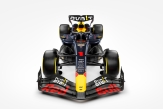
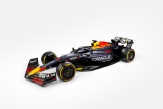

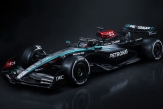
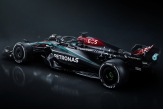


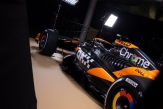

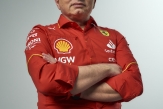
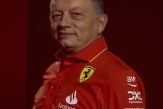
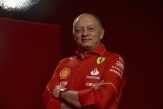

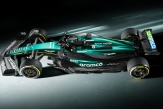

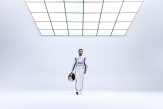

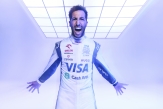
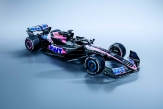
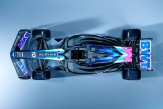

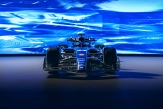

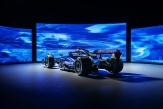
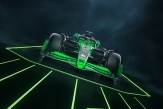
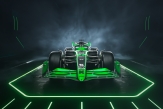
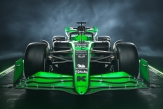

15/04/2024 от Огнян Тенчев (drJeckyll), няма коментари